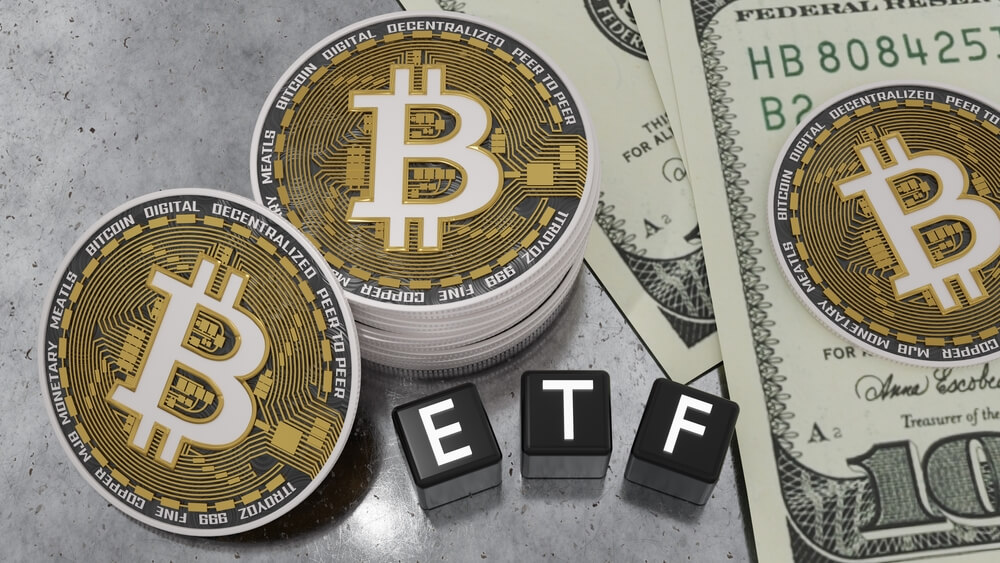
Gold Guide: Investing in Gold Mutual Funds
Gold can be bought as physical or digital gold for different reasons.
People who like to wear the yellow metal have only one option: buy gold as jewelry. Those keen on investing in the precious metal for the metal’s ability to withstand harsh economic environments either buy physical gold (as jewelry, bullion, etc.) or invest in gold ETFs, gold mining stocks, gold mutual funds, etc.

The different ways to invest in gold are standalone topics and require a more in-depth look than just a mere glaze-over. For the brevity of this piece and to not waver the intended focus much, we’ll discuss just gold funds here — or, to be more specific, gold mutual funds.
The points we’ll cover include:
- A brief introduction to gold mutual funds
- The reasons to invest in the gold fund
- A few drawbacks of investing in the fund
- How gold mutual funds differ from gold ETFs, and lots more
If you always thought investing in gold was just buying physical gold or didn’t consider gold mutual funds because it seemed a bit too complex, this write-up shall clear up things and hopefully move the needle for you.
Table of Contents
What is a Gold Mutual Fund?
A gold mutual fund, or just a gold fund, is a kind of investment fund that works like any other mutual fund. The only difference is that all purchases made with the funds’ investors are either gold or related to the precious metal.
The fund could be holding stocks of gold mining businesses or firms participating in different kinds of gold-related operations — for instance, production of gold bullion and gold coins, trading gold futures contracts, etc. Generally, gold mutual funds hold assets in stocks of gold mining companies. Besides gold, some gold funds could have other precious metals as the other underlying asset. Gold mutual funds are administered or governed like any other mutual fund. An asset management company (AMC) pools funds from its clients. It puts the capital into various gold investments — of course, under the direct supervision of a portfolio manager, also called a money manager.
Read more: Is Gold Worth More Than Money?
Why Invest in Gold Mutual Funds?
The following are some of the key reasons you must consider a gold fund investment:
Striking the Right Balance
Gold investment is ideal for those who do not like their investments going up and down erratically too often. On the other hand, people who want their investment portfolio to grow at pace steer clear of gold due to the precious metal’s inability to appreciate the way stocks do. However, stocks can be highly volatile and entail understanding various market risks.
Gold mutual funds are likely the answer for those who want the best of both worlds – gold’s stability and the stock market’s growth potential. Gold funds, like any mutual fund, have experienced fund managers who study the various assets before adding them to the fund basket.
And since these funds could also be holding physical gold or gold assets detached from the vagaries of stock markets, any risks attached to gold stocks are balanced out. In other words, if the stock exchange comes tumbling down, the fund’s real gold investments would steady the ship.
Convenient Way to Own Gold
Buying physical gold may have its perks, but it comes with quite a few drawbacks too. For example, the insurance and storage costs pertaining to owning the gold could be high.
There are no such concerns with a gold mutual fund since you indirectly invest in gold and, therefore, are not responsible for safeguarding the metal. Also, there won’t be any physical gold trading and associated fees.
As an investor in the fund, you can buy gold and exit the relationship at the click of a mouse button. There, however, would be fees involved, or you could be penalized for the action, depending on how early you exit the fund.
Choosing Between a Hedge or Growth
You could ascertain your gold fund investment based on your investment objective or specific investing requirements.
For instance, if you’d like to hedge against inflation risk, you could buy a gold fund that primarily or wholly holds gold futures or gold bullion, thereby hedging against the possible erosion of your purchasing power by inflation.
Investors who do not view gold funds purely as an inflation hedge and want them to serve as the conduit that lets them safely invest in stocks of gold mining companies and benefit from higher returns have more than a handful of gold mutual funds to select from.
And besides the appreciation derived from the profits generated by those gold mining firms, the rise in gold prices would also positively affect your investment’s value.
In other words, by investing in gold mining companies, you benefit from increasing gold prices and the specific company’s ability to decrease costs and increase production. In short, mining stocks outperform physical gold over a period.
By the way, any drop in gold price would adversely affect the value of your gold fund holdings.
Drawbacks of Gold Mutual Funds

Gold mutual funds aren’t without their flaws. Here are some:
No Physical Gold Ownership
For starters, you don’t get to own gold in the metal. In other words, no gold is stored in your name at a third-party depository, unlike in a gold IRA arrangement. If one of your biggest pushes to invest in gold is to own a piece of it, you shouldn’t be looking at a gold fund. A gold IRA is what you should be seriously considering.
Lower Returns, Relatively
Long-term investments in gold are usually identified with capital gains and treated as a safeguard against inflation or paper currency devaluation. It’s not an asset that provides returns as dividends or interest income. Although gold funds may provide dividend payments, not all do. Many choose to reinvest capital gains back into the fund to generate returns for the future.
Not to mention, the returns on gold funds aren’t necessarily high, particularly when compared to equities. Those tend to be higher only during a market collapse, usually a once-in-a-decade phenomenon.
Difference Between Gold ETFs and Gold Mutual Funds
Out of all digital gold investment options, a gold fund and gold exchange-traded funds (gold ETFs) are arguably two of the most popular choices. Both are available for investment yearlong but exiting the funds may not be that simple, or the rules for the same may not be identical. Besides that, there are quite a few other differences between the two.
Accessibility
You could buy a gold fund through a commercial bank or similar financial institutions. On the other hand, gold ETFs are accessible only via the stock exchange. In other words, the ETF is an exchange-traded fund.
If buying and selling stocks in your country requires opening a separate trading account, you need the same for trading gold ETFs. In India, for instance, one would need a Demat account to buy gold ETFs. In the United States and most of Europe, you don’t require a Demat or anything else besides your trading account.
Working Mechanisms, Asset Classes
As mentioned earlier, a gold mutual fund usually buys stocks of gold mining firms. But it could also hold gold in its physical form. The fund’s value moves in correlation to the assets’ performance.
As the abbreviation indicates, a gold ETF gets listed on the equity market or trades like stocks. People who invest in gold ETFs don’t own any physical gold but gain exposure to the metal through their investment positions that they usually hold for long periods.
Kindly note, a gold mutual fund could invest in gold ETF-purchasing schemes.
Exit Loads
Gold funds, like any other mutual funds, have a lock-in period. That means the investors are expected to remain put in the fund or not (partially or wholly) redeem their units before a specific period.
If the investor redeems their units, they would be charged a fee or exit load, depending on the exit’s timing and the fund in general. The earlier the departure, the higher would be the penalty. Some gold funds could waver the exit load after 12 months have elapsed.
With gold ETFs, there are no exit loads. You could freely move out of or enter the fund based on your specific investment requirements and market scenarios. Moreover, gold ETFs are relatively inexpensive or have lower management costs than gold mutual funds.
Why Not Invest Directly in Gold Mining Stocks?
As clearly mentioned above, most gold funds put their investors’ money into stocks of gold mining firms so that there’s enough growth potential or there’s “meaningful growth”. The capital appreciation derived from owning physical gold is low compared to equivalent stock market investments.
Then, why not invest in gold stocks directly? Why take the mutual fund route? The answer to the question is two-fold: expert supervision and risk balance.
Putting money in the stock market is easy, but doing it the right way is not that simple. There’s a relatively steep learning curve. You would have to crunch numbers, know the past performance of stocks you’re considering, pore over the company’s financial statements and other related documents carefully, etc.
Even seasoned investors cannot confidently say their equity investments will fetch them good returns. There are just too many cogs in the securities investment wheel. And you, the investor, do not have control over most of them or cannot directly influence them.
The gold mining stock that a gold fund holds money in, albeit a significant portion, is not the only asset class where the money goes. The money is held in various other forms of gold investments, such as physical gold and gold ETFs. Moreover, stocks of several gold mining firms are invested in.
If a mining company or two perform underperforms, the relatively strong show put up by other businesses will make up for that hit. If all the stocks fare poorly, maybe due to an industry-wide lull, the other gold investments will balance things.
In other words, a gold fund is sufficiently padded from as many sides as possible so that the impact of any adverse gold market movement is significantly minimized, and your investments do not erode much.
Read more: 401k to Gold Rollover Guide
Conclusion
Although gold is relatively stable, it’s no stranger to price fluctuations — at times, volatile movements. Moreover, if you know how gold investments work, you shouldn’t be allocating more than 5 to 10% of your investment portfolio to gold — irrespective of whether it’s physical gold or paper gold.
Like any other gold investment, a gold fund would serve as a hedge against plummeting stock prices, but it would never be the driving factor of your portfolio. Also, never invest in gold when you sense a fall in stock prices or if the paper currency is on the decline. Because, by the time you realize the same, gold prices would have gone up considerably, and it may not be worth buying the gold for that premium.
Long story short, gold must be a permanent feature of most portfolios and not used as a stop-gap solution for the poor performance of other investments (stocks, bonds, real estate, etc.).
FAQs
What is the expense ratio?
Gold or non-gold mutual funds have an expense ratio, which denotes the total yearly operating costs of the fund. The ratio comprises various operational expenses—administrative, management, distribution, marketing, compliance, etc.
The expense ratio is calculated every year and is made public in the fund’s prospectus. The expense ratio is one of the several components to look at before investing in a gold fund. The lower the expense ratio, the greater your returns as an investor.
A good expense ratio range is 0.5% to 0.75%. It’s not rare to find a gold mutual fund with a ratio lower than 0.5%. Anything above 1.5% is on the high side.


